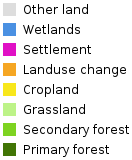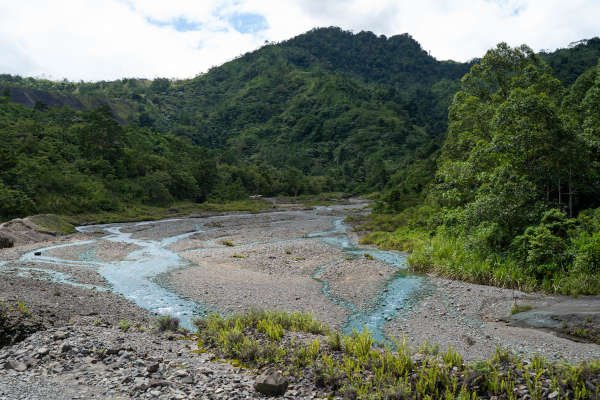Environment
PNG lies in the southwestern Pacific Ocean and comprises the eastern half of the world's second largest island of New Guinea and about 600 small islands. Today it comprises 21 provinces.
The island of New Guinea's geography is defined by the central high Bismarck mountain range, including the highest mountains in Oceania, with several smaller coastal ranges stretching towards the coastline (see: Digital Elevation Model). Part of the Pacific Rim of Fire, a line of volcanoes stretches along the north coast of the mainland and several of the islands are active or recently active volcanoes (see: Volcanic eruptions).
The high equatorial ranges and warm tropical seas generate high rainfall, which feed thousands of streams and rivers that have broken the landscape into many isolated and hard-to-reach plains and valleys (see: Rivers Flood Frequency for a visualization of the stretch of watersheds and their flood potential). To the north and south of the central mountain range lie vast stretches of mangroves and wetlands including the Sepik River, which is the longest river system in Papua New Guinea. Coral reefs and seagrass meadows fringe the islands and coastline, and Papua New Guinea's waters are estimated to hold the highest marine biodiversity in the Pacific.
Papua New Guinea's Environment
elevation model

The above map sets the context for Papua New Guinea's rich and remote geography, including its high mountains, vast river system, and high level of endemic and threatened biodiversity. The implications of this geography include:
- Evolution of very diverse flora and fauna, including many endemic species - those found nowhere else in the world - see Range Size Rarity of all 1184 forest-based mammals, birds, reptiles and amphibian species native to PNG, as defined by the IUCN Red List of Threatened Species (2017).
- A high dependence on natural resources for lives and livelihoods, with over 85% of Papua New Guineans dependent on natural resources for subsistence, and the national government heavily dependent on extractives as a source of income.
- Poor accessibility to remote communities and the development of diverse cultures with over 850 recognised languages. This remoteness has been compounded by a lack of infrastructure and services and high transport costs in many areas.
- High vulnerability to volcanic eruptions, earthquakes and other natural disasters and the impacts of climate change.











